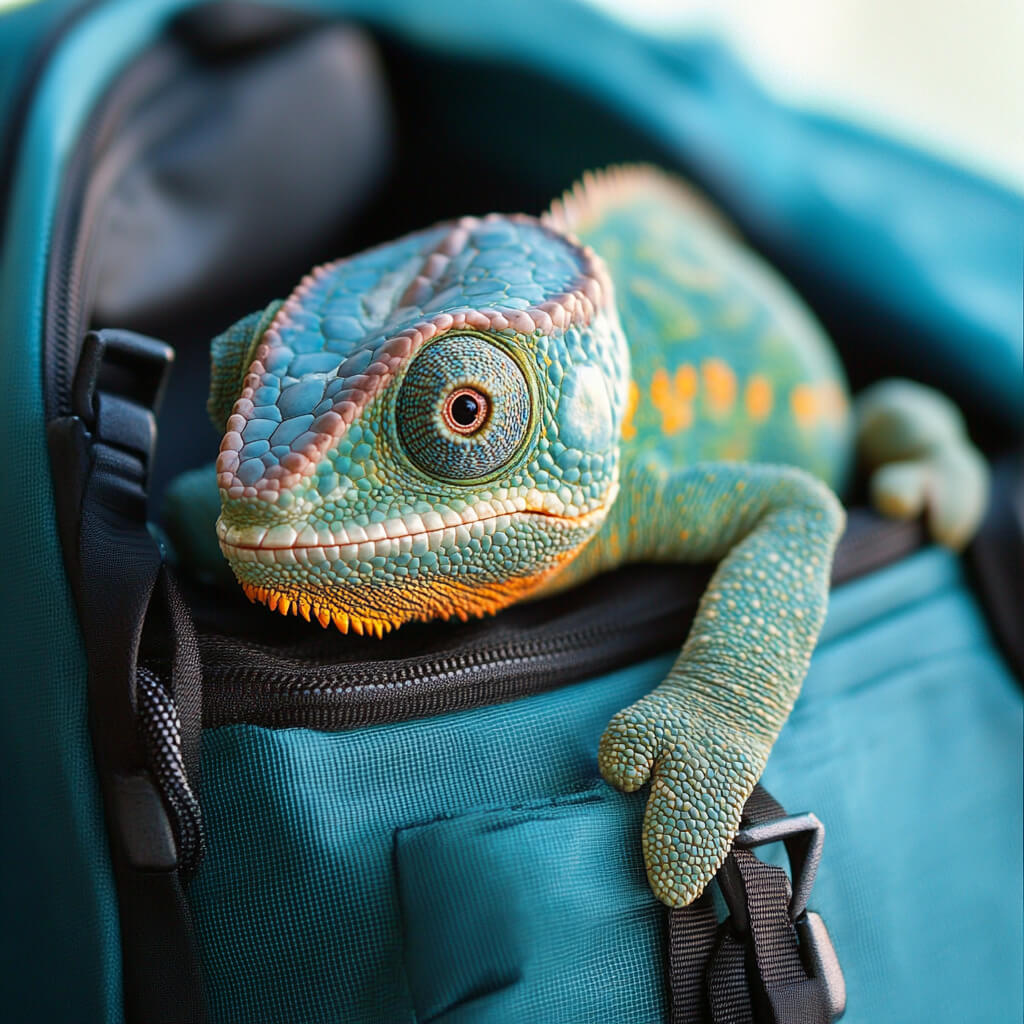No, chameleons shouldn’t eat lemons.
I know, it might seem like a fun idea to watch your chameleon turn yellow while nibbling on a lemon, but trust me, it’s not a good plan.
Lemons are way too acidic for these little guys, and they can cause some serious tummy troubles.
Risks of feeding lemons to chameleons
Feeding lemons to your chameleon is like giving a kid nothing but candy for dinner – it’s just not gonna end well. Here’s why:
- Super sour stomach: Lemons are super acidic, and chameleons’ tummies aren’t built to handle that kind of sourness.
- Tummy troubles: Too much acid can lead to upset stomachs, diarrhea, and other not-so-fun digestive issues.
- Vitamin overload: While vitamins are good, too much of a good thing can be bad. Lemons are packed with Vitamin C, which in large amounts can be harmful to chameleons.
Here’s a quick breakdown of the lemon danger zones:
| Lemon Part | Risk Level | Potential Issues |
| Flesh | High | Acidity, vitamin overload |
| Peel | Very High | Choking hazard, pesticides |
| Juice | High | Extreme acidity |
Understanding chameleon digestive system
Now, let’s talk about chameleon tummies. These little guys have a digestive system that’s pretty different from ours.
Chameleons are insectivores, which means they’re built to munch on bugs, not fruits.
Their stomachs are like tiny bug-processing factories, not fruit smoothie makers.
Here’s a fun fact: chameleons have a short digestive tract, which means food moves through them pretty quickly. This is great for digesting insects, but not so great for breaking down tough plant materials or dealing with acidic fruits.
Safe fruits for chameleons
Just because lemons are a no-go doesn’t mean all fruits are off the menu. Some fruits can be a yummy treat for your chameleon friend. Here’s a list of chameleon-approved fruits:
- Apples (without seeds)
- Berries (strawberries, blueberries)
- Mango
- Papaya
- Melon
Remember, fruits should be like dessert for chameleons – a special treat, not the main course. A little bit once or twice a week is plenty.
Here’s a handy fruit feeding guide:
| Fruit | Serving Size | Frequency |
| Apple | 1-2 small cubes | Once a week |
| Berries | 1-2 berries | Once a week |
| Mango | Small slice | Once every two weeks |
| Papaya | Small slice | Once every two weeks |
| Melon | Small cube | Once a week |
Importance of hydration in chameleon diet
Let’s talk about chameleon drinks! Water is super important for these scaly pals.
While they don’t drink like we do (no chameleon-sized water bottles here), they do need to stay hydrated.
Chameleons get most of their water from the leaves they walk on and the insects they eat.
But you can help them out by misting their enclosure regularly. It’s like creating a mini rainforest for them!
Here are some hydration tips:
- Mist the enclosure 2-3 times a day
- Use a dripper system to create water droplets on leaves
- Offer a shallow water dish for larger chameleons
Remember, while fruits can provide some moisture, they shouldn’t be the main source of hydration for your chameleon.
Balanced nutrition for chameleons
Feeding a chameleon is like solving a puzzle – you need all the right pieces to make the picture complete. A balanced chameleon diet should include:
- Insects (the main course)
- Leafy greens (the side dish)
- Fruits (the occasional dessert)
- Supplements (the vitamin boost)
Here’s a cool chart showing what a chameleon’s diet should look like:
Chameleon Diet Chart:
🐛 Insects: 80%
🥬 Leafy Greens: 15%
🍎 Fruits: 4%
💊 Supplements: 1%
Remember, variety is the spice of life, even for chameleons! Try to offer different types of insects and greens to keep your little buddy healthy and interested in their food.
Best practices for feeding chameleons
Alright, feeding time! Here are some top tips to make mealtime awesome for your chameleon:
- Introduce new foods slowly: Chameleons can be picky eaters. Offer new foods one at a time to see what they like.
- Prepare food properly: Wash fruits and veggies, and gut-load insects before feeding them to your chameleon.
- Stick to a schedule: Most adult chameleons do well with feeding every other day. Younger ones might need daily meals.
- Use the right tools: Feeding tongs can help you offer food without stressing out your chameleon.
- Remove uneaten food: Don’t leave old food in the enclosure – it can attract pests and make your chameleon sick.
FAQs about chameleon diet and lemons
Are any citrus fruits safe for chameleons?
Nope, it’s best to avoid all citrus fruits. They’re too acidic for chameleon tummies.
How often should I feed fruits to my chameleon?
Fruits should be an occasional treat, offered once or twice a week at most.
What are the signs of citrus poisoning in chameleons?
Watch out for loss of appetite, diarrhea, lethargy, and changes in skin color.
Can chameleons eat lemon leaves or flowers?
It’s best to avoid all parts of the lemon plant, including leaves and flowers.
What should I do if my chameleon accidentally eats a lemon?
Keep an eye on them for any unusual behavior and contact your vet if you notice any problems.
Conclusion
We’ve been on quite a journey through the world of chameleon dining. Let’s wrap things up:
- Lemons are a big no-no for chameleons
- A balanced diet of insects, greens, and the occasional fruit is key
- Hydration is super important
- When in doubt, stick to chameleon-safe foods and always ask your vet
Remember, every chameleon is unique, just like their amazing color-changing abilities.
What works for one might not work for another.
The most important thing is to pay attention to your scaly friend and give them lots of love (and appropriate snacks)!
Now go forth and be the best chameleon chef you can be! Your color-changing buddy will thank you for it.







Leave a Reply